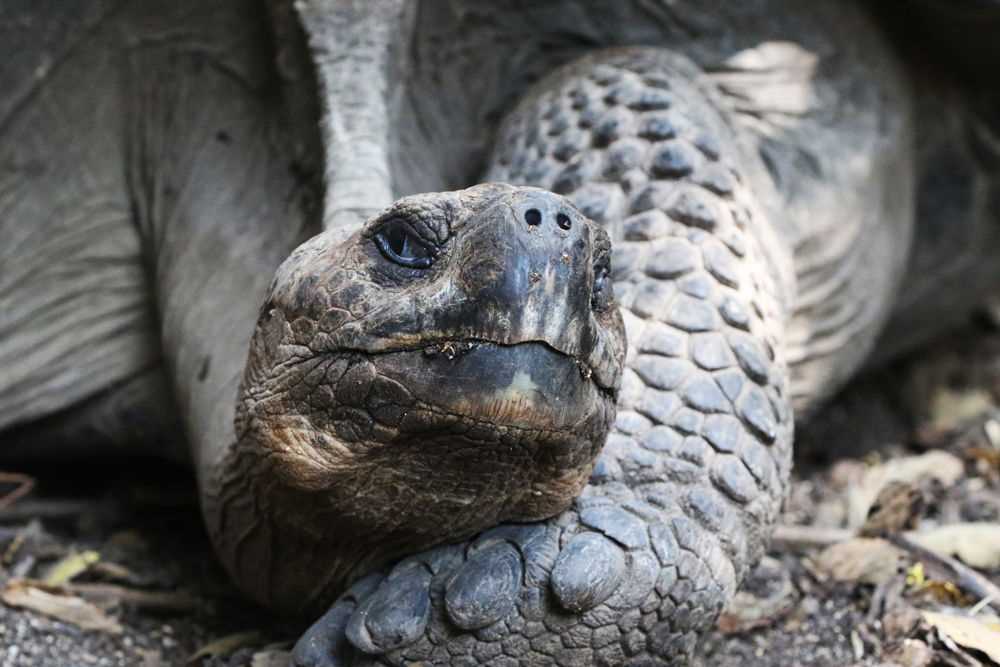Named after Queen Isabel, Isabela is the largest island in the Galapagos. The island is very volcanic, with current activity on show. Urbina was our landing site with its black sand beach where Pacific green sea turtles annually lay eggs. The sand dunes were marked by activity from last night. The area is vast and vegetated. The island has rich volcanic soil where numerous plants grow to be food for the resting and nesting birds. The plants also provide food and shade for reptiles, like the giant tortoises and iguanas that nest here. Many land birds also like living on the island, which offers room, provisions, and safety for most of the year. We encountered some giant tortoises, a few right in the path. They were immobile and oblivious to our presence.
Our last stop was the beach, where we took a dip to cool off and to look at the underwater life that abounds here, especially turtles and penguins.
The afternoon took us to Tagus Cove, where we started with paddleboarding and kayak trips to observe the bay, teeming with life, from different angles. We also snorkeled with penguins, cormorants, invertebrates, turtles, fish, and more.
To continue with our expedition, we went on an invigorating hike to view Darwin Lake. Some guests went for a Zodiac ride to find exquisite wildlife like penguins, cormorants, pelicans, boobies, and more. It was another beautiful and exciting day in the Galapagos.







